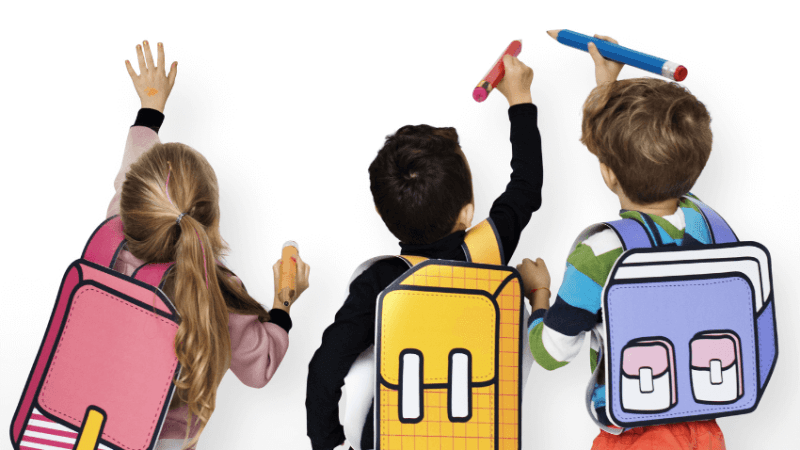Blank Levels of Questioning – Using them in your classroom

Understanding where your pupils lie within the Blank Level framework means you can group them together according to the complexity of the task…

- by Louise Ryves

Teachers frequently ask me how they can meet the needs of all pupils with one task. My answer: use Blank Levels of Questioning.
What are the Blank Levels of Questioning?
The Blank Levels of Questioning, also known as the Language of Learning model, is a practical framework informed by studies of the language we use in classrooms.
It’s based on the idea that children’s language and reasoning skills develop alongside each other, and as that understanding and vocabulary increase, the ability to figure out and reason in more complex situations develops.
The framework consists of four levels of language skills, and questions of increasing complexity.
The four levels
Level 1 – Naming/nouns
This level focuses on the here and now, with questions such as, ‘What are you doing?’, ‘What is it?’, ‘What did you see?’, and ‘Who is that?’
Level 2 – Describing/verbs/concepts
This level encourages children to think and search. The answers will be in front of them, but they will have to think about it.
Questions may include:
- What’s happened?
- Who?
- What?
- Where?
You may also use questions that ask children to describe the differences between two objects, or identify characteristics of an object.
Understanding and use of concepts and descriptive language are rooted at this level. 60 per cent of three-year-olds have competent skills at levels 1 and 2.
Level 3 – Re-telling
This level prompts children to think outside of the here and now – the answer is no longer in front of them, so they will need to look for clues and start to make their own assumptions and thoughts.
This includes being able to answer questions like, ‘What will happen next?’ and ‘What might he/she/they say?’
Level 4 – Justifying
This level is where children use their most abstract language skills. They will need to draw on their previous knowledge to form their own thoughts and opinions, using their existing understanding to predict and solve problems.
The hardest questions fall into this level, e.g., ‘How do you know…?’ and ‘Why does X happen when we do Y?’. 65 per cent of five-year-olds can understand and use level 3 and 4 skills.
In the classroom and beyond
The Blank Levels of Questions model is an ideal framework to keep in mind when lesson planning, as it can help you differentiate learning tasks.
Understanding where your pupils lie within the Blank Level framework means you can group them together according to the complexity of the task.
Trending
This can support children at lower Blank Levels to achieve, and encourage those at higher Blank Levels to extend their language in a supportive way.
When you’re in the classroom, the Levels allow you to reflect on a learning activity that a pupil was able, or unable, to engage with. They can also be helpful in challenging and unexpected situations. They provide a sliding scale of questions that you can use to support pupils.
Often, when children are feeling upset, their ability to process and hear language decreases. This means that even pupils who are confidently at Blank Level 4 can benefit when you ask them questions at a lower level.
Just swapping a few words in a question can make it easier and more accessible. For example, you could change “Why are you feeling sad?” to “What made you feel sad?”.
What’s more, you can use the framework across the curriculum. Whenever children use spoken language you can apply the Blank Levels.
Identifying challenges
There are four key signs that may highlight whether a pupil is having difficulty understanding language in the classroom:
- They may ask for repetition of verbal information.
- They may watch others to see what they do, before starting the activity.
- They may be unable to start a learning task after you’ve given instructions. They may carry out part of the task and get stuck.
- You may describe them as a ‘quiet child’. They may try to avoid tasks by using behaviours that draw attention away from what they need to do.
One quick tip that is really easy to put into practice is to make sure you plan learning activities to include a selection of questions from each of the Blank Levels. Watch your pupils respond to these questions to get an idea of which level they may be at.
You can also make a keyring of questions you ask in the classroom, colour coding them to different Blank Levels to make an easy reference source that you and other adults can carry around.
Some teachers find it useful to put a poster of the different Blank Levels on the wall. This provides a visual reminder that you can refer to quickly.
Children learn language by seeing, touching and hearing first, and then through social interaction with the world around them. Adults can support this by considering the language learning environment and making changes in the language that they use.
A good understanding of your pupils’ language levels will not only enable you to pitch activities at the correct level, but it will also give you the tools you need to make adjustments as required throughout, responding to individual children’s need for additional challenge or support.
Benefits of the Blank Levels of questioning
- Can provide any primary school teacher with a solid framework to support pupil’s language development
- Consists of four easy-to-use levels of language and verbal reasoning development, spanning from concrete to abstract
- Can be used by any adult in the classroom to support students with skills at different levels
- Helps educators to plan and differentiate learning activities
- Allows pupils to feel empowered when they can achieve, stretching them and encouraging them to develop to the next level of language and reasoning skills
- Can be used across the whole curriculum
- Children who are involved in an unexpected or challenging situation can be supported by using different levels of questioning
Visit commtap.org for free, downloadable Blank Levels of Questions resources.
Louise Ryves is co-director and speech and language therapist at Commtap CIC. Find more information about Blank Levels, and a free classroom guide, at commtap.org.







